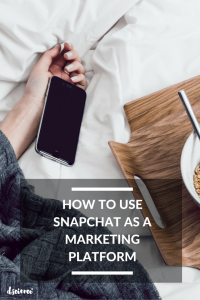Have you ever purchased three of the same exact basic t-shirts to fulfill a “buy-one-get-one free” type deal? Do you continuously return to the same Mexican restaurant on Tuesday to get the $ 2 tacos and salt-rimmed margaritas?

Whether you know it or not, you’re being manipulated every day by smart marketers who have dived into our psychological impulses and tricked us into buying another, returning again, clicking on their ad, or re-visiting their website (hint, hint remarketing). The smartest marketers are the ones that have a strong psychological understanding of how we, as humans, operate. Of course each individual is different, and not every psychological test is going to yield parallel results, but from what we know about common behavioral habits we can make conclusions on what works. If marketers aren’t thinking about the brain, common behaviors, and utilizing psychology and data to make better decisions, then they’re doing it wrong!
In this post I’ll focus on using psychological tricks to perfect your PPC ad copy, in turn leading to more clicks and conversions. So, let’s break the habit of writing generic, skippable copy. I’m tired of seeing the same old “Buy Now!” and “Save Time and Money” nonsense. These days, everyone seems to be duplicating everyone else’s ad copy and it’s BORING. Even if it’s working, your ads likely aren’t living up to their full potential, so let’s dive into the 5 psychological tricks to turn your ads from basic into outstanding.

3 ads that are for the most part the same. Don’t DO this!
#1: Combine Emotional Triggers with Personalized Copy
Brace yourself as I make a bold claim: humans are all selfish beings. I know what you’re thinking, “not me, I’m not selfish.” But analyze your thought process over the span of a day. You wake up and think, “I’m hungry, what do I want to eat for breakfast?” Perhaps on your way to work you hop on Pinterest and think “I want shoes like that.” I could go on and on, but the point is you’re always thinking about YOU, and your ad copy should be as well. You need to speak to ME by using the word “you” a lot! Confused yet?

In tandem with speaking to the user, your ad copy needs to persuade them to take action. The easiest and most effective way to persuade is by spurring on powerful emotions that entice the searcher to click. Think about why you chose one brand over the other? Study after study proves that we pay more for the same product due to the emotional response we get from brand loyalty. “Most people believe that choices they make result from a rational analysis of available alternatives. In reality, however, emotions greatly influence and, in many cases, even determine our decisions,” says Psychology Today.
So how can you do this in your ad copy? One way is by using genius marketer Perry Marshall’s Swiss Army Knife method. First you identify your customer, a thing your customer loves, a thing your customer hates, your customer’s worst enemy and best friend, etc. Then take your brand and find ways they are related to each entity and form your copy off of that.
Check out this example that has over 30% CTR, beating out the advertiser’s competition by a landslide.

Notice how the ad focuses solely on “you,” while evoking all sorts of emotions such as curiosity, jealously, revenge, and satisfaction. It’s incredible what YOU can do with so few characters to work with.
#2: Appeal to the I-Don’t-Want-to-Be-Left-Out Fear
More commonly known as FOMO, or fear of missing out. We’ve all had this feeling – let’s say your friends are going to a summer barbecue while you’re stuck putting in extra hours at the office. Believe it or not, this also happens when shopping online, doing research, and reading ad copy.
Loss aversion is the psychological term – it’s actually in our DNA to feel FOMO. Marketers often use the fact that people prefer avoiding losses to acquiring gains to instill this fear of missing out, resulting in more clicks and conversions. The key to instilling this feeling in the searcher is inserting some form of urgency. As in you WILL be left out of this sale if you don’t buy TODAY, or you WILL NOT get a free trial if you don’t sign up before this date.
The easiest way to do this within your ad copy? Implement ad customizer countdowns and limited time sale promos to fuel this fear of loss. Ad customizers come in many shapes and sizes, but the gist is you can run a special deal that updates in real-time without having to maintain ads manually. Learn more and try them.

#3: Think Outside-the-Box & Be a Bit Bizarre to Resonate
Believe it or not, there’s a scientific method, known as the bizarreness effect, which proves that people tend to remember unusual material over common material. Joanna Wiebe, Author of Copy Hackers, explains how much she hates standard marketing messages: “I loathe it so much because it’s completely common phrasing which basically wipes out its chance of recall… and recall is kind of a big deal not only for converting visitors, but also for generating shares and retaining customers.”
So, what can you do to stand out and be a bit bizarre within your ad copy? Don’t go nuts and start writing irrelevant headlines just to be different, but instead look at your competitors’ ads and spend time brainstorming language that will spark the user’s interest. Channel your inner comedian and create funny puns within your ads like the one below.

Get it? Because they can’t see?
Marty Weintraub of aimClear presented on creative ad copy hacks at SMX Advanced in Seattle, and I was lucky enough to have a front row seat. And wow, does this guy have energy! “Creative needs to be more than just good, it must be stunning,” he says. Here’s a few things that Marty recommends trying:
- Use creative adjectives in your headlines. For example “[KW], Oh My” or “[KW, Incredible]”
- Leverage the power of bastardized clichés. Everyone knows clichés, which makes the searcher feel included, but if you give the cliché a unique twist it can really resonate. Some examples Marty gave include “1 + 1 = Tooth Decay” or “Eat Carbs or Be Eaten.” Clever stuff.
- Grab the searcher’s attention! Use actively attention-grabbing words like “Listen Up” and “Calling All”
Those are just a few ideas to get started, but all you need to do is reveal your inner bizarreness and be compelling to differentiate yourself from your neighboring ads.
#4: Prioritize the Headline of Your Ad
The serial position effect proves that when given a list of information we tend to recall the first (primacy) and the last (regency) items on the list, and are more likely to forget the items in the middle. So what does this tell you about your ad copy? The headline and end of the ad are the most important! Your headline needs to be the main focus of your ad copy, not only because of the primacy effect, but also because we’ve seen time and time again that the headline is the MAIN component of an ad that searchers are most likely to read.
But, what about the end of your ad? I’d recommend experimenting with postscripts in either the last description line of your ad copy or in the sitelink or callout extensions to highlight critical information (such as your call-to-action or an enticing offering). Let’s say you’re offering a 50% discount, your ad copy or sitelink extension could be “P.S. 50% off for 2 more days,” or “P.S. Order Today For Free Shipping.” Get the gist? “It’s an eye-catching oddity at the end of your pitch,” says Kapost’s Ryan Law.
P.S. Don’t forget to utilize post scripts and create outstandingly eye-catching and clickable headlines.
#5: Utilize Repetition
Do you ever feel like your brain’s tapped? Nowadays everywhere we go there’s some form of marketing message, whether we realize it or not. From the banner ads on the subway, to the display ads we consistently see when browsing the web, to the ads on our coasters at the bar. Even spaces we never expected to see ads are covered in them (think bathroom stalls, personal web space like our inboxes and Instagram feeds, etc.).

“Our everyday lives are filled with competing marketing messages. If we tried to assess the validity of each of these claims, we’d be too busy to make any decisions,” says Law. “The more we hear or read a statement, the more inclined we are to believe it, even when it’s being repeated by a single person or business.”
This psychological concept is known at the illusionary truth effect, and it means that repetition is likely to be interpreted as accuracy over time. Again, this is why customers are so loyal to certain brands. The key is to not be repetitive with a basic statement that anyone of your competitors could duplicate.
So, what should you do to be repetitive in a compelling way? Start by…
- Creating a slogan or catchy call-to-action that will become your trademark. It must be unique, catchy, and get your main brand message across to your target audience. Utilize this statement in the majority of your text ads to make it resonate with your searchers
- Using Remarketing Lists for Search Ads. RLSA’s allow you to show your ads to people who have already visited your website by targeting a broader set of keywords. For example if you rent kayaking gear for summer adventures you could target someone who previously visited your site with broad keywords such as “kayaking.” You wouldn’t want to do this with a first time searcher since they could just be looking for a Wikipedia explanation of the sport, but since they’ve already expressed interest in renting you can target them again utilizing your catchy marketing message.
- Repurposing the same marketing messages across similar channels, like your display and remarketing ads, within social ads, etc.
In no time your target audience will recognize your brand and be much more likely to convert.
(220)
Report Post




